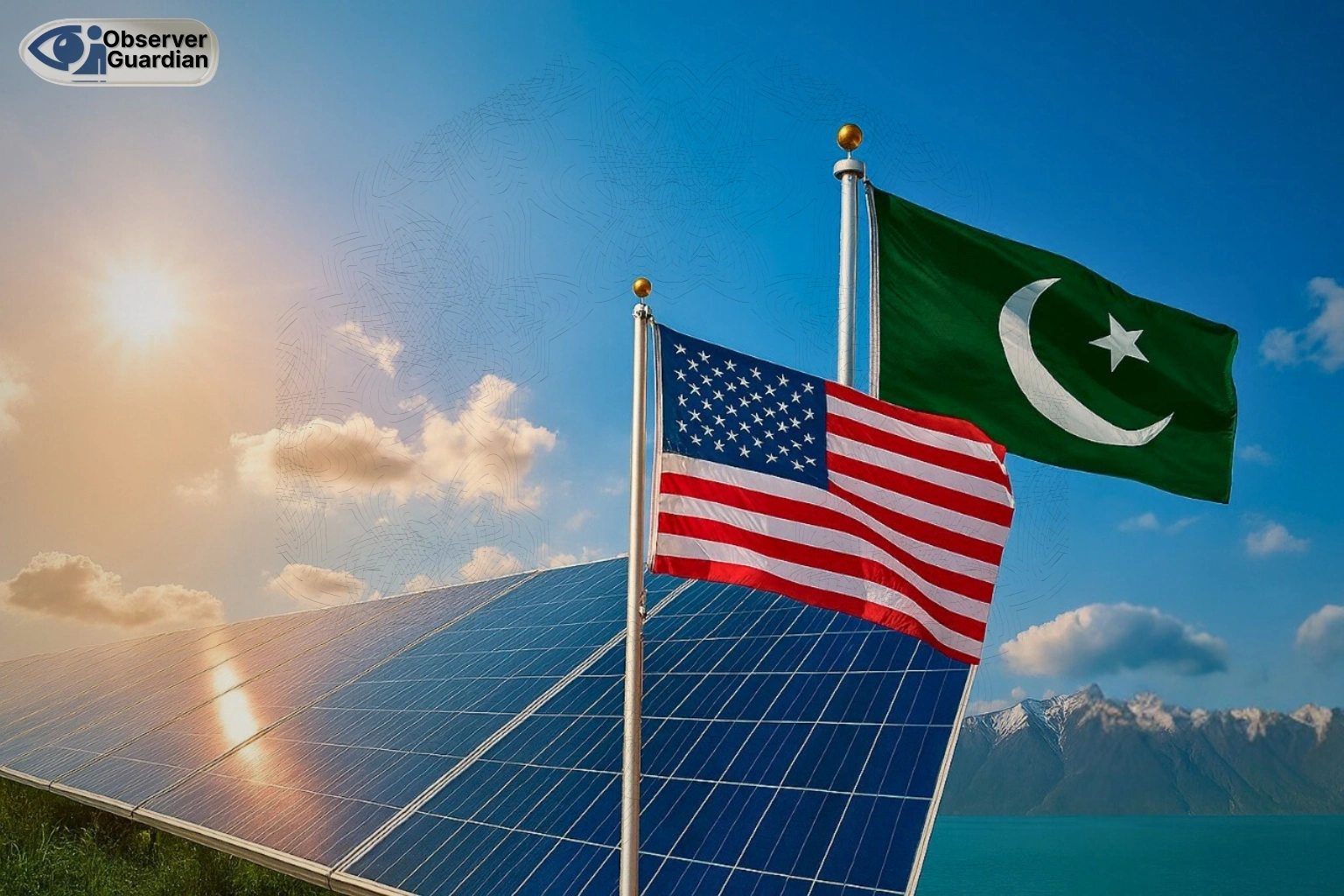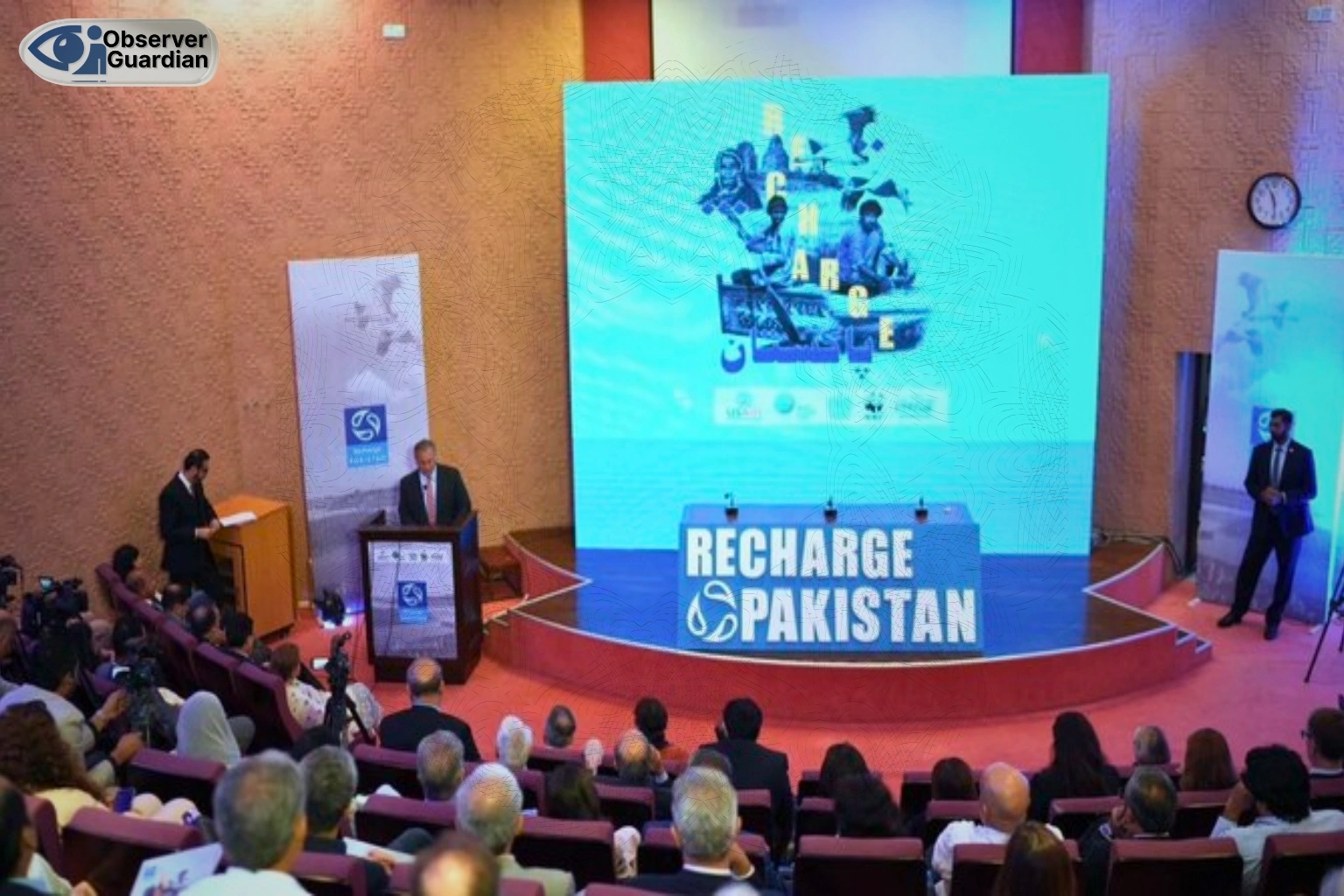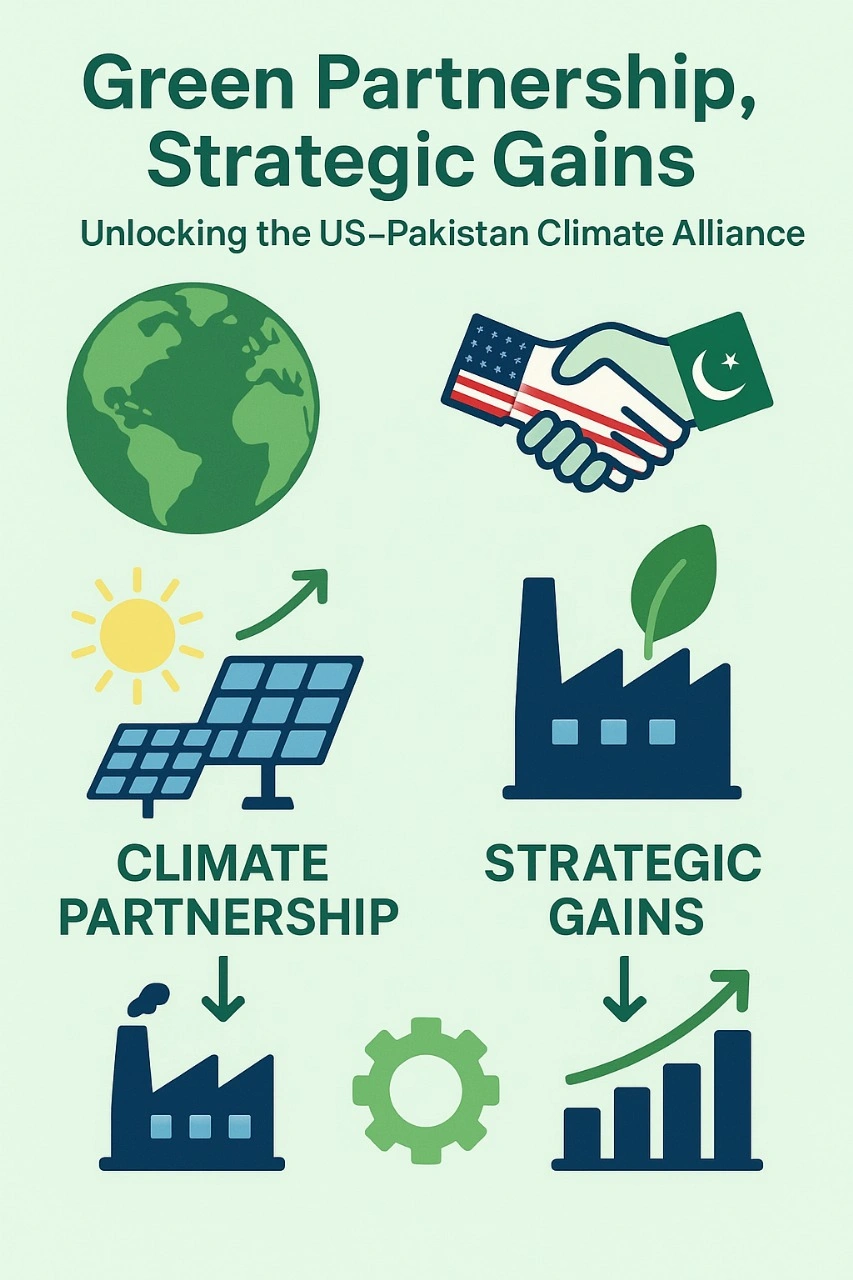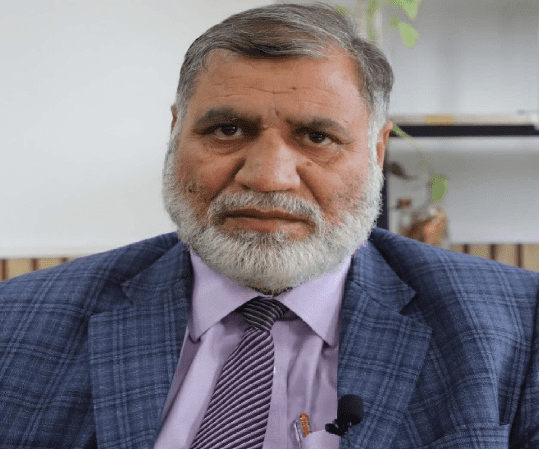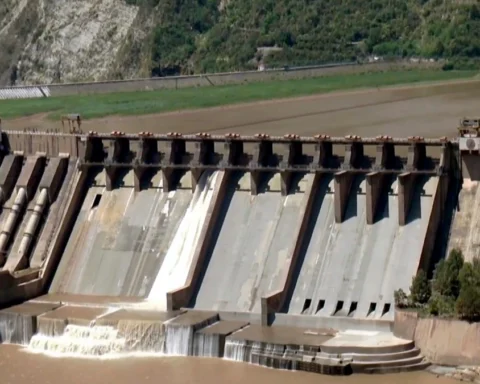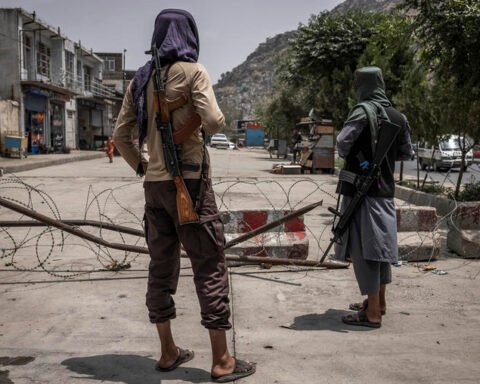Green Partnership
Pakistan’s energy story is changing fast. A country that once seemed stuck in rolling blackouts and heavy fuel imports is now surprising a lot of people by becoming one of the fastest growing solar markets in the region. Panels are popping up everywhere from rooftop systems in Lahore to utility scale projects in Sindh. The geography helps as over 300 days of sunshine each year gives Pakistan a natural advantage. What is different now is that prices have dropped, local demand is strong, and the government has started clearing space for renewables in the national grid.
That shift matters not just for Pakistan’s own future, but for how it fits into the broader global push toward clean energy. And here’s where the United States comes in.
Why is this a US opportunity too?
The US has a deep bench in renewable tech. For example, high-efficiency solar panels, advanced battery storage, smart grids, financing models that make projects bankable. Pakistan, meanwhile, has a market that is hungry for all of it. This is not about aid or charity. It’s a commercial opportunity where both sides can win. As American companies gain access to a rapidly expanding solar landscape, and Pakistan gets a jump-start on building cleaner, more reliable power.
And unlike older, top down aid packages, a partnership that leans on private investment and technology transfer has the potential to be more sustainable.
Think joint ventures, training programs, and local capacity building rather than a donor-recipient dynamic. That makes it less about dependency and more about genuine cooperation.
Geopolitics in South Asia
There is also a strategic angle. China has already poured billions into Pakistan’s energy and infrastructure through CPEC. Some of those investments have helped, but they have also left Pakistan tied closely to Beijing in ways that limit flexibility. A strong US Pakistan climate partnership would not erase China’s role, but it would give Pakistan options.
For Washington, this is a way to reengage in South Asia on terms that are forward-looking and not just about security. Climate diplomacy is increasingly part of the foreign policy toolkit, and Pakistan climate vulnerable, energy-hungry, and geopolitically significant is a natural place to put it to work.
Two goals, one alliance
If you boil it down, the goals are simple. First, Pakistan needs help making its energy transition real cutting emissions, meeting Paris commitments, and building resilience against floods, droughts, and heatwaves that are already hitting hard. Second, the US wants to play a bigger role in shaping development in South Asia, a region where its footprint has shrunk. A climate alliance speaks to both.
But saying it is easier than doing it. For this to work, it must be practical. That could mean:
- Setting up research partnerships between US universities and Pakistani institutions.
- Using US development finance tools to reduce the risk for investors.
- Bringing in American firms to modernize Pakistan’s grid so renewables can be absorbed at scale.
- Creating exchange programs to train Pakistani engineers and entrepreneurs in clean energy tech.
These are not pipe dreams. These are things other countries are already doing in different contexts. It is just a matter of aligning interests and moving from declarations to execution.
Why does climate cooperation feel different?
One reason this could stick is that energy cuts across politics in ways that security or aid packages often do not. Reliable, affordable power is something every household cares about. If people see solar making their lives easier, lower bills, fewer outages, jobs for local technicians. So, it builds goodwill that speeches alone cannot.
It also gives the US a chance to show it can be a partner that empowers rather than dominates. That matters in Pakistan, where public opinion has often soured on foreign involvement. Helping people light their homes or run their farms with clean energy is a much easier sell than abstract talk of regional stability.
The hurdles nobody should ignore
There are risks, of course. Pakistan’s regulatory system can be messy, policies often shift with politics, and financial instability makes investors nervous. US companies would not line up unless there’s confidence that contracts will be honored and projects would not get caught in bureaucratic quicksand. For Pakistan, the challenge is to avoid simply replacing one dependency (on China) with another.
Both sides need to play this carefully. Washington must coordinate across its agencies, so efforts do not get lost in red tape. Islamabad must create a predictable policy environment and push for projects that deliver visible benefits. Otherwise, the momentum fizzles.
The US Pakistan relationship has often been weighed down by mismatched expectations and the baggage of past decades. Climate might be the rare area where interests genuinely overlap.
Pakistan wants to move faster on renewables, and the US wants to show up in South Asia with something constructive. If both sides commit, the result could be more than just megawatts on the grid. It could be the start of a new way of working together.
And that is the bigger point. A green alliance would not just reduce emissions. It would create jobs, ease Pakistan’s energy stress, give the US a meaningful role in a critical region, and build a relationship on something positive rather than transactional. That’s worth trying.
⚠️ Disclaimer
The views and opinions expressed in this article are exclusively those of the author and do not reflect the official stance, policies, or perspectives of the Platform.


